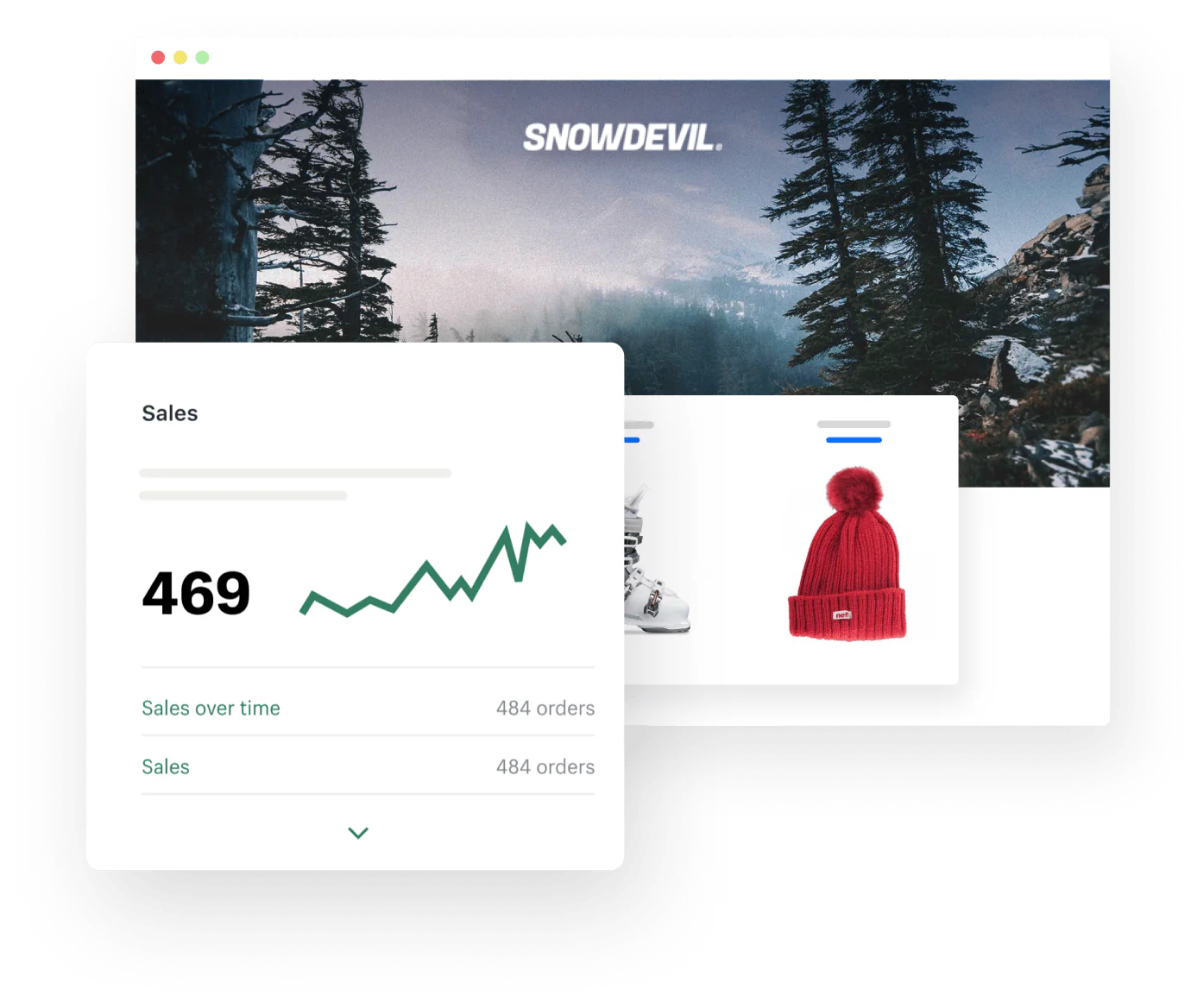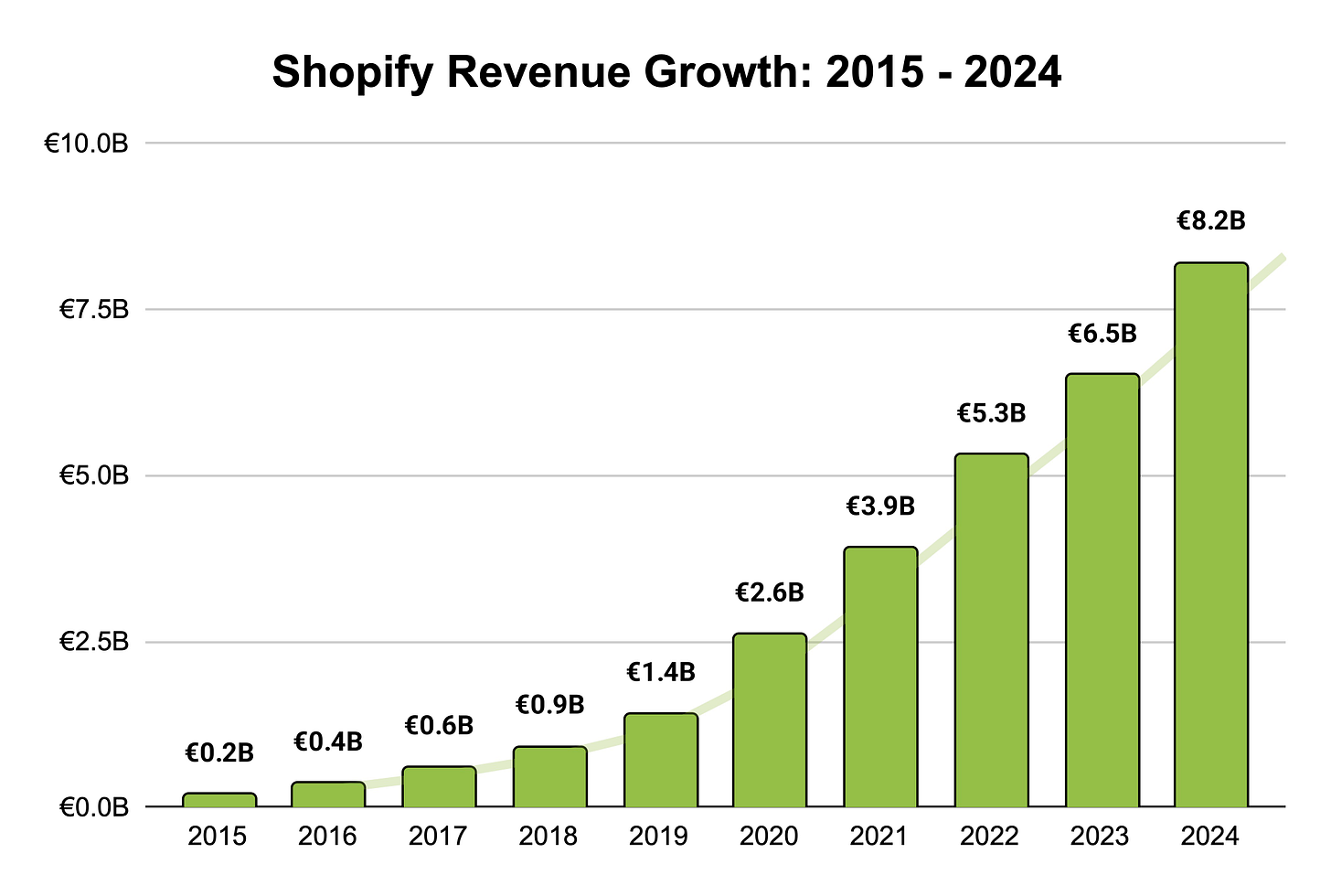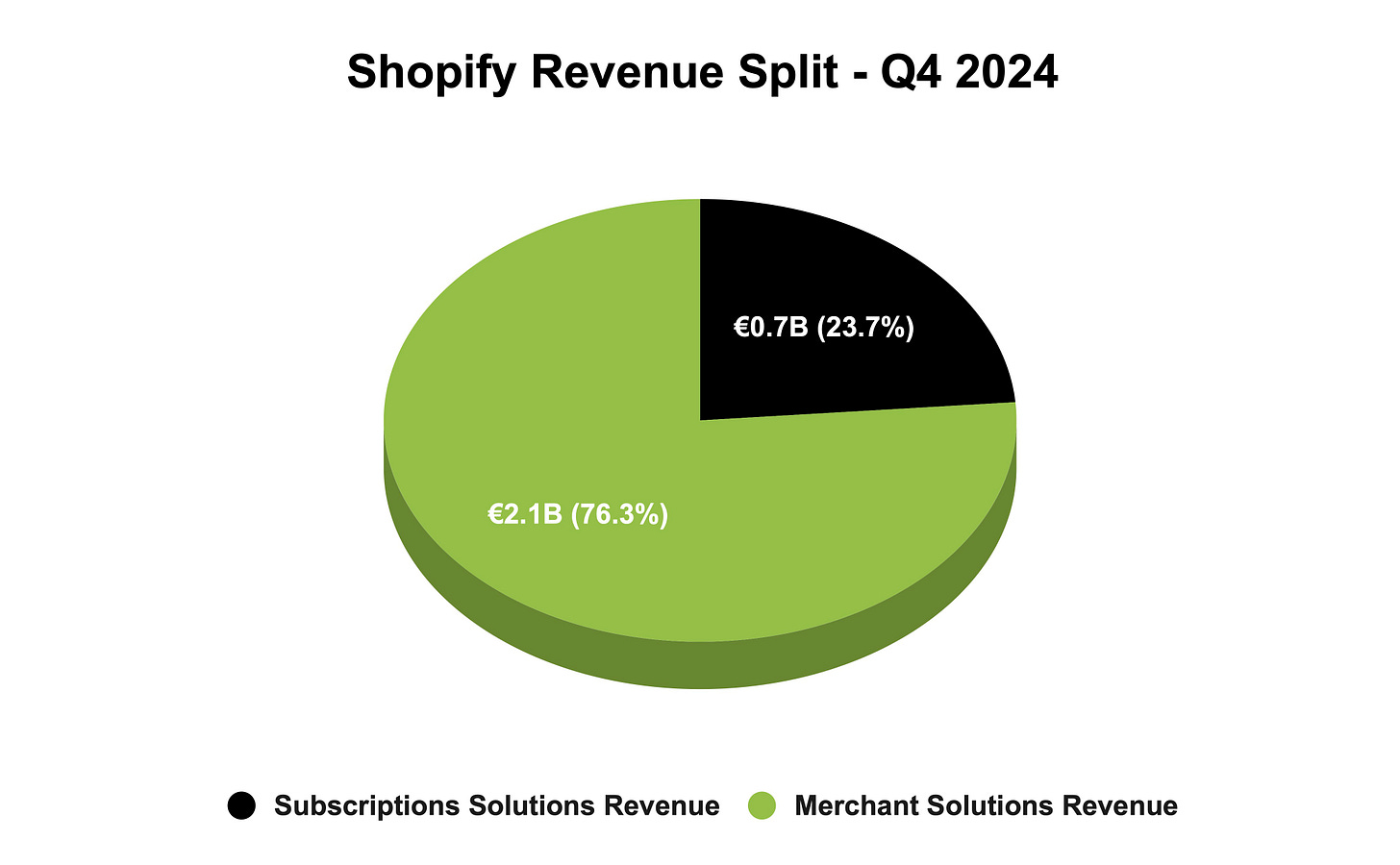How Shopify Monetize
Spoiler: 76% of their revenue does not come from subscriptions
Hey, Pierre-Jean here 👋 Welcome to this new edition of The Growth Mind, where I break down how startups scale through product-led growth, monetization, and retention.
Today, we’re diving into a Shopify monetization masterclass, because how they make money is a key reason they’ve become an e-commerce giant.
Shopify in a few figures:
8.2Md€ of revenue in 2024
≈ 142Md $ Market Cap as of now
≈10% of e-commerce GMV in the US is powered by Shopify
And yet, less than a quarter of their revenue comes from subscriptions. So how do they do it? Let’s break it down.
⏱️ Reading time → 4 minutes
Need support on Product Growth? See how I can help.
[Sponsor] Want to evaluate your digital maturity? Amplitude released one of the best resources to do it: The Digital Maturity Assessment
I’ve been an Amplitude user and blog reader for years, and I’m always impressed by the high-quality content they constantly push.
Amplitude’s Digital Maturity Assessment helps you evaluate and improve your digital product experience, backed by data from the world’s top companies.
What do you get by taking the 2-minute assessment?
✅ A personalized score across four key pillars
✅ Identified gaps and areas to improve
✅ Insights from industry leaders with a custom report
Thanks to Amplitude for sponsoring the newsletter 💙
Shopify: the online snowboarding store that became a leading e-commerce platform
Shopify was created officially in 2006, but the story began in 2004.
Tobias Lütke, Daniel Weinand, and Scott Lake, three friends from Ottawa, Canada, started their entrepreneurial journey by launching “Snowdevil”, an online store selling snowboarding equipment.
Naturally, they looked for an e-commerce solution to host their store. However, they quickly felt disappointed with the existing solutions, so they built their own.
“Over a decade ago, we started a store to sell snowboards online. None of the ecommerce solutions at the time gave us the control we needed to be successful—so we built our own”
Long story short, Shopify is now one of the hottest tech startups and a leading e-commerce platform, powering millions of stores.
They achieved €8.2B in revenue in 2024 (+26% year-on-year) and €1.4B EBITDA (+92% year-on-year).
Many factors can explain the growth of Shopify, like the rise of e-commerce and solopreneurship (many people create online stores, either as a side business or core activity), alongside strategic product launches and amazing execution. But for today, we’ll focus on their Monetization model, which has proven to be a capital factor of revenue growth.
Subscription + Usage-based: how Shopify aligns its revenue with its clients’ growth
Most SaaS businesses monetize with a classic subscription model. You generally provide a freemium version or a free trial, and, once users decide to go on a paid plan, they’re charged a fixed amount every month or year.
But Shopify does it differently. They have two revenue streams:
Subscription solutions: The recurring revenue they make through subscription tiers.
Merchant solutions: Fees taken on transactions. It also includes referral fees or advertising revenue, but it looks marginal.
Having a “take-rate” is classic for a marketplace → A % of commission is captured by the platform (which is the business model of Airbnb for example). But it’s less the case for a SaaS business.
Depending on the payment provider (Shopify payments - their own solution - or a 3rd party provider like Stripe), Shopify charges a bit differently. But they get more revenue if you use Shopify payments (2.5% to 2.9% fees + 30¢ per transaction), instead of for a 3rd party provider (0.6% to 2%, on top of which the 3rd party provider adds its own transaction fees). That’s why launching Shopify payments in 2013 was a very smart move to capture 100% of payment processing fees.
Guess what? 76% of their revenue comes through Merchant solutions. Less than a quarter from subscriptions.
The more their clients generate revenue, the more Shopify revenue grows: interests are aligned
What is smart with this monetization model is that Shopify grows alongside its clients.
According to Chargeflow, Shopify reported in 2020 that:
The average monthly revenue of a Shopify store is $1,579.
The top 10% of stores generate a monthly revenue of $10,866.
But among those 10%, you have some brands generating tens of millions in sales. A few famous examples include:
Heinz to home (the famous ketchup)
Staples, a retail company selling office supplies
Victoria Beckham fashion store
Following Pareto law, we could argue that the 20% best-performing stores generate 80% of revenue. But my guess (not backed by data - I did not find a reliable source of truth on this topic) is that it’s even more unbalanced: I would bet for something like “the 10% best-performing stores generate 90% of revenue”.
This hybrid monetization model, combining both subscriptions and payment processing fees has been one of the biggest revenue drivers for Shopify.
However, there is a risk (or limitation) with this strategy → The more your clients grow, the more they might be tempted to leave Shopify and build their own store and use another payment provider with lower fees.
Because the main value of Shopify is in reducing barriers to create a store. But the more a company grows, the more it has the resources to build a custom store.
But it did not prevent Shopify from becoming one of the largest e-commerce platforms. So we can clearly be inspired by this model.
The two main learnings of this monetization strategy:
Subscription revenue is linear. Considering another layer of monetization on top of subscriptions might unlock a huge revenue pocket.
Aligning your monetization model with user interest is a fair and healthy way to generate revenue.
Need help with Product Growth? Here are 2 ways I can help you:
Fractional Growth PM: Need senior guidance and execution on Product Growth, without hiring a full-time PM? I help you by joining an existing squad or as your first Growth PM.
Product Growth Sprint: Looking to move fast on a critical Product Growth challenge with focused execution? I help you on a custom 2 to 4 weeks mission on on the following challenges:
Fix onboarding & activation drop-offs.
Work on monetization to increase free-to-paid conversion.
Build a scalable growth loop.
→ Available in French 🇫🇷 and English 🇬🇧







